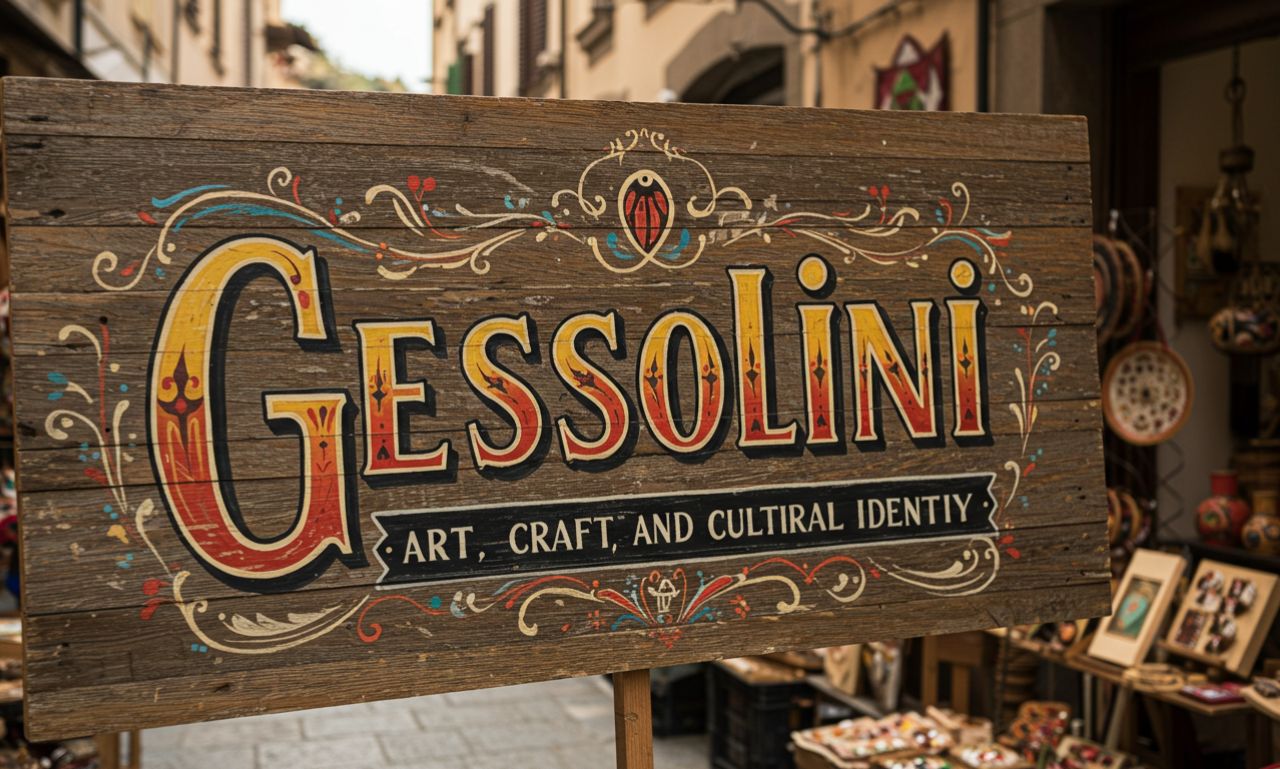Art has always been a powerful reflection of human creativity and identity. Among the many artistic traditions that connect craftsmanship with culture, gessolini stands out as a fascinating blend of heritage and design. Though not always widely known, gessolini reflects centuries of innovation, technique, and symbolic meaning, making it an art form that continues to inspire modern creators.
In this article, we take a journey through the history, techniques, and cultural relevance of it while exploring how it shapes today’s art and design.
What is gessolini?
At its core, gessolini refers to a decorative and artistic tradition rooted in craftsmanship. It combines ornamental design with cultural symbolism, often seen in architecture, fine art, and decorative elements. While interpretations of gesso-lini vary across regions, its unifying characteristic is the focus on detail, texture, and expressive form.
More than a technique, gesso-lini is a statement of identity. Artists and designers who work within this tradition view it not only as craft but also as cultural storytelling—expressing values, beliefs, and heritage through form and structure.
The Origins of gessolini
The origins of gessolini can be traced back to classical traditions of decorative art. It evolved through centuries of artistic experimentation, influenced by regional styles, materials, and cultural narratives.
In many regions, gesso-lini drew inspiration from natural elements, geometric patterns, and symbolic motifs. It was used in architecture to embellish buildings, in art to create textured surfaces, and in design to give everyday objects a sense of refinement.
By the 19th and 20th centuries, gesso-lini began adapting to modern tastes while preserving its heritage. This combination of tradition and innovation continues to define its identity today.
The Techniques of gessolini
The beauty of gesso-lini lies in its technical diversity. Artists use a variety of methods to achieve its distinctive appearance:
Textured Surfaces
Gessolini often involves layering materials to create depth. This technique enhances both visual appeal and tactile experience.
Carving and Detailing
Many works feature intricate carvings or engraved patterns. These details are often symbolic, representing cultural themes or historical references.
Blending Traditional and Modern Materials
Originally crafted with natural materials, gessolini has adapted to modern times by incorporating new textures and finishes, allowing for more versatility in design.
Color and Finish
While some gesso-lini pieces emphasize neutral tones to highlight texture, others incorporate bold colors that reflect regional identity or artistic vision.
Cultural Significance of gessolini
Beyond aesthetics, gessolini holds deep cultural meaning. It is often tied to traditions of craftsmanship passed down through generations. In many communities, gesso-lini pieces symbolize unity, identity, and continuity of heritage.
Because of its cultural depth, gessolini is often found in ceremonial spaces, religious buildings, and public architecture. Its presence in such contexts reinforces its role as more than decoration—it is a narrative embedded in design.
gessolini in Architecture
Architecture has long been a primary canvas for gesso-lini. From ornate facades to interior detailing, it elements bring buildings to life with unique character.
Historical buildings often showcase gesso-lini in their ceilings, arches, or walls, where craftsmanship tells stories of the era. In modern architecture, it continues to influence design through contemporary reinterpretations of traditional motifs.
gessolini in Modern Art and Design
While rooted in history, gesso-lini remains highly relevant in today’s creative industries. Modern artists use it as a way to bridge tradition with contemporary expression. Designers integrate gessolini techniques into furniture, interior design, and even digital art, proving its adaptability.
By blending heritage with innovation, gesso-lini continues to resonate with new generations who value cultural authenticity alongside modern aesthetics.
gessolini and Sustainability
As the art and design world increasingly embraces sustainability, gessolini offers important lessons. Many of its traditional practices use natural and locally sourced materials, reflecting sustainable craftsmanship.
In today’s context, artists reinterpreting it prioritize eco-friendly materials and responsible design practices, making it not only beautiful but also environmentally conscious.
The Role of gessolini in Cultural Identity
Cultural identity plays a significant role in gessolini’s legacy. For communities, it serves as a reminder of shared heritage, while for individuals, it is a medium of personal expression.
By preserving it’s traditions, artists keep cultural narratives alive, ensuring that the knowledge and symbolism continue to inspire future generations.
The Global Influence of gessolini
Though rooted in local traditions, gessolini has crossed borders to influence art and design globally. International exhibitions often feature gessolini-inspired works, and cross-cultural collaborations have expanded its reach.
From Europe to Asia and beyond, artists incorporate it motifs into new mediums, blending global creativity with timeless craftsmanship.
Challenges Facing gessolini
Despite its enduring relevance, gessolini faces challenges in the modern world.
-
Loss of Traditional Knowledge: As younger generations shift to digital careers, fewer craftsmen continue the legacy.
-
Commercialization: Mass-produced imitations can undermine authenticity.
-
Globalization: Homogenization of design trends sometimes overshadows local traditions like gesso-lini.
Addressing these challenges requires efforts in education, preservation, and innovation.
The Future of gessolini
The future of gessolini lies in its ability to adapt while preserving tradition. With increased interest in cultural heritage and sustainable design, gessolini has strong potential to thrive.
Expect to see more hybrid forms of it that merge with modern art movements, digital design, and even virtual spaces. This adaptability ensures its place not just as history, but as a living, evolving form of expression.
Conclusion
Gessolini is more than a decorative tradition—it is a powerful expression of cultural heritage, craftsmanship, and artistic innovation. From its origins in architectural design to its modern reinterpretations in art and sustainable practices, it continues to inspire. By blending history with creativity, it stands as a timeless reminder that art and identity are inseparable.

